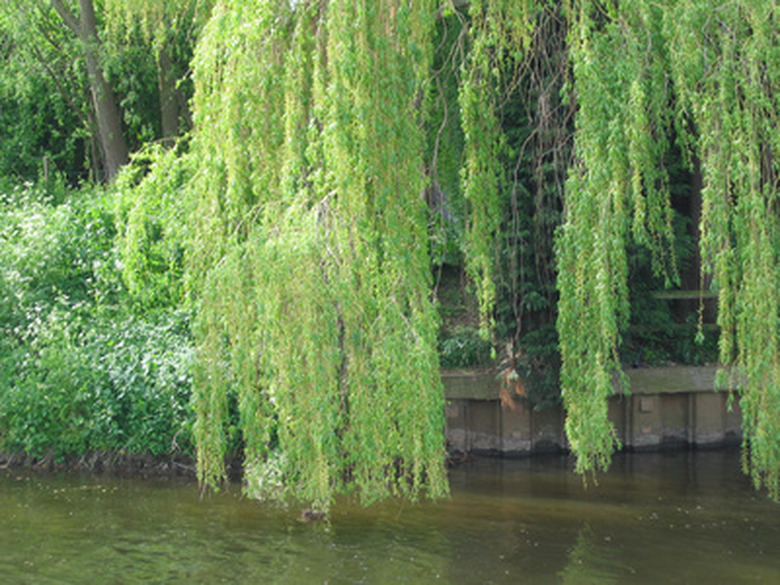The Root System Of A Weeping Willow
Native to China, the weeping willow (Salix babylonica) is a graceful deciduous tree that grows 45 feet to 70 feet tall with a crown of flowing branches that can be just as wide. Its aggressive roots can grow three times as wide as its branches. This has consequences both where the trees spread along streams and when they are planted near buildings.
Root Description
The roots of willow trees are not large, and they do not grow deep. They are small and fine, forming mats that spread just below the surface.
Roots in the Landscape
Weeping willow roots follow the water. Left unchecked, these trees form thickets along streams and creeks where their roots spread into the water, often diverting it from its natural channel. As a result, the stream can erode, causing floods. Weeping willows are considered an invasive weed in Connecticut, the District of Columbia, Illinois, New York, North Carolina, Oregon, Washington and West Virginia.
- Native to China, the weeping willow (Salix babylonica) is a graceful deciduous tree that grows 45 feet to 70 feet tall with a crown of flowing branches that can be just as wide.
- Left unchecked, these trees form thickets along streams and creeks where their roots spread into the water, often diverting it from its natural channel.
Damage
These roots sometimes spread on top of the ground where they can get in the way of lawn mowers. Mats of weeping willow roots can lift sidewalks. They are infamous for penetrating the joints of underground sewage and water lines and for growing into the drain fields of septic tanks. Once a thin willow root finds a tiny crack in a sewage pipe or water line, it can expand inside, forming a thick mat that can eventually block the flow of sewage or water.
Weeping Willows and Subsidence
Subsidence is where water is withdrawn from fine-grained soil such as clay. When water is removed from clay, it crumbles. During a drought, willow roots seeking moisture follow the cracks that develop in dry clay, sucking up what moisture might be left. The clay begins to collapse and the foundation starts to sink. Nikki Sellers, home insurance manager for Esure, a British insurance company, says weeping willows should be planted at least 130 feet from the foundation of a building.
- These roots sometimes spread on top of the ground where they can get in the way of lawn mowers.
- Once a thin willow root finds a tiny crack in a sewage pipe or water line, it can expand inside, forming a thick mat that can eventually block the flow of sewage or water.
Growth Factors
Both the size of the tree and the availability of moisture determine the spread of the roots of a willow tree. Larger trees have more roots and longer roots. In dry weather, the roots spread aggressively in search of moisture. Pruning a willow tree severely can prevent roots from spreading, but once the pruning stops, the roots grow even faster. Roots grow deeper in sandy soil than in clay soil. They are best planted along ponds or streams, not in a lawn or garden near buildings.
